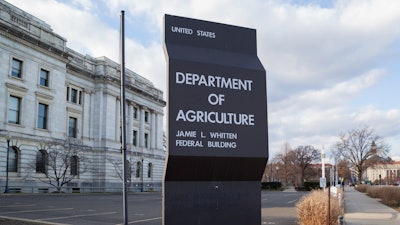
WASHINGTON — The U.S. Department of Agriculture’s (USDA) National Agricultural Statistics Service (NASS) will conduct the 2020 Local Food Marketing Practices Survey, beginning this December. First conducted in 2015, this Census of Agriculture special study will look at local and regional food systems and provide new data on how locally grown food in the United States are marketed and sold. The results will be available in November 2021.
"Federal funding and policies for local and regional food systems were greatly expanded by the last three Farm Bills and it is our job as a federal statistical agency to help measure this part of the agriculture sector,” said NASS Administrator Hubert Hamer. “We are excited to provide the first official federal data on marketing practices for local food since 2015 and therefore a five-year comparison point to inform policies and business in this area.”
The 2020 Local Food Marketing Practices Survey is part of the Census of Agriculture Program and as such is required and protected by law (Title 7 USC 2204(g) Public Law 105-113). These federal laws require producers to respond and USDA to keep identities and answers confidential. Farmers and ranchers who receive the survey may complete it securely and conveniently online at www.agcounts.usda.gov or by mail. The deadline for response is February 16, 2021.
The survey will ask producers about their production and local marketing of foods during the 2020 calendar year, including the value of food sales by marketing channel such as farmers markets, restaurants, and roadside stands. Other questions seek information on the value of crop and livestock sales, marketing practices, expenses, federal farm program participation, and more.
Local foods production is linked to USDA priorities, including facilitating rural prosperity and economic development along with providing all Americans access to a safe, nutritious, and secure food supply. Researchers, policymakers, farmers, ranchers, industry professionals, and USDA personnel will use the resulting information in their work on local and regional food and agricultural systems. Examples of such uses include:
- USDA Agricultural Marketing Service’s Farmers Market Promotion Program, Local Foods Promotion Program, Specialty Crop Block Grants Program
- USDA Farm Service Agency’s Microloan Program
- USDA Food Insecurity Nutrition Incentives Program, a collaboration between USDA’s National Institute of Food and Agriculture and USDA’s Food and Nutrition Service
- USDA Food and Nutrition Service’s efforts to expand EBT availability at farmers markets
- State and local agencies’ support and promotion of local food markets
- Farmers’ and ag organizations’ business and marketing strategies
- Researchers’ and university extension members’ research
For more information about the 2020 Local Food Marketing Practices Survey, visit www.nass.usda.gov/go/local-food.
NASS is also preparing for the 2022 Census of Agriculture, a complete count of all U.S. farms and ranches and the people who operate them. Any producer who did not receive the 2017 Census of Agriculture can sign up at www.agcounts.usda.gov/getcounted.






















